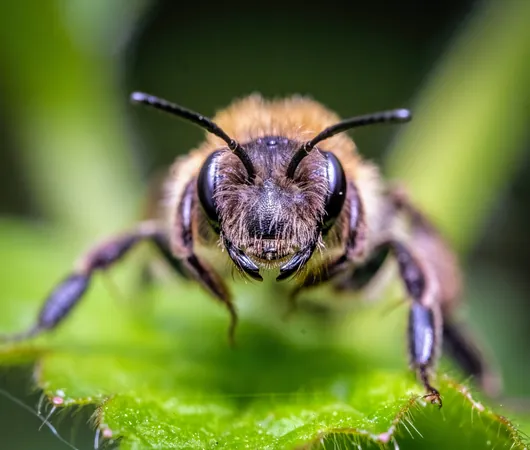
Tiny Fossil Uncovers the Secrets of Arthropod Evolution
2025-08-31
Author: Li
In a groundbreaking discovery, scientists have revealed that a minuscule ancestor of today’s arthropods roamed the shallow seas of what is now Yunnan, China, over 500 million years ago. Known as **Jianfengia multisegmentalis**, this tiny creature boasted large grasping arms, stalked eyes, and a surprisingly sophisticated brain nestled in a head no wider than a pencil tip.
Unraveling the Arthropod Mystery
Arthropods, the dominant class of invertebrates, include insects, spiders, crabs, and centipedes—more than a million species thriving across land, sea, and air. Their success is attributed to their robust exoskeletons and segmented bodies. Yet, the evolutionary split between two main arthropod branches had puzzled scientists for years: **mandibulates** (like insects and crustaceans) which possess jaws, and **chelicerates** (spiders and scorpions) known for their fangs.
Jianfengia: A Fossil That Changes Everything
Initially categorized among **megacheirans**, or 'large hands,' Jianfengia was thought to belong to chelicerates due to its unique claws resembling those of horseshoe crabs. However, recent examinations led by the University of Arizona unveiled a remarkable secret—a brain structure strikingly similar to modern crustaceans.
A Surprising Discovery: The Ancestor of Antennae
Lead researcher Nicholas Strausfeld noted that Jianfengia lacked the typical antennules found in crustaceans and insects. Instead, its robust appendages served to grasp objects, suggesting they are the precursors to modern antennae rather than primitive fangs as previously believed.
Vision of the Past: The Eyes of Jianfengia
Measuring just 0.08 inches across, Jianfengia's head was packed with sensory capabilities. It featured compound eyes akin to those of modern insects and crabs, showcasing advanced light-detecting cells preserved in unusually well-preserved fossils—an extremely rare find considering soft tissue typically decomposes long before fossilization.
Two Branches, One Evolutionary Path
Alongside Jianfengia, another creature, **Alalcomenaeus**, also belonged to the megacheiran lineage. Despite their outward similarities, the brains of these two creatures revealed divergent evolutionary paths—one led towards modern crustaceans and insects, while the other branched into the realm of spiders and scorpions.
The Evolutionary Significance of Brain Structures
These findings highlight the importance of fossilized brains in deciphering evolutionary relationships. While physical features can provide clues, the neural architecture offers profound insights into an organism's identity and evolutionary lineage. The remarkable organization of these ancient brains parallels living arthropods, revealing the deep, enduring lineage that makes arthropods the most successful animals on Earth.
This tiny brain has not only helped unravel the mystery of arthropod evolution but also established a new understanding of how these life forms have thrived across various ecosystems for millennia. The full research is detailed in the journal **Nature Communications**.




 Brasil (PT)
Brasil (PT)
 Canada (EN)
Canada (EN)
 Chile (ES)
Chile (ES)
 Česko (CS)
Česko (CS)
 대한민국 (KO)
대한민국 (KO)
 España (ES)
España (ES)
 France (FR)
France (FR)
 Hong Kong (EN)
Hong Kong (EN)
 Italia (IT)
Italia (IT)
 日本 (JA)
日本 (JA)
 Magyarország (HU)
Magyarország (HU)
 Norge (NO)
Norge (NO)
 Polska (PL)
Polska (PL)
 Schweiz (DE)
Schweiz (DE)
 Singapore (EN)
Singapore (EN)
 Sverige (SV)
Sverige (SV)
 Suomi (FI)
Suomi (FI)
 Türkiye (TR)
Türkiye (TR)
 الإمارات العربية المتحدة (AR)
الإمارات العربية المتحدة (AR)